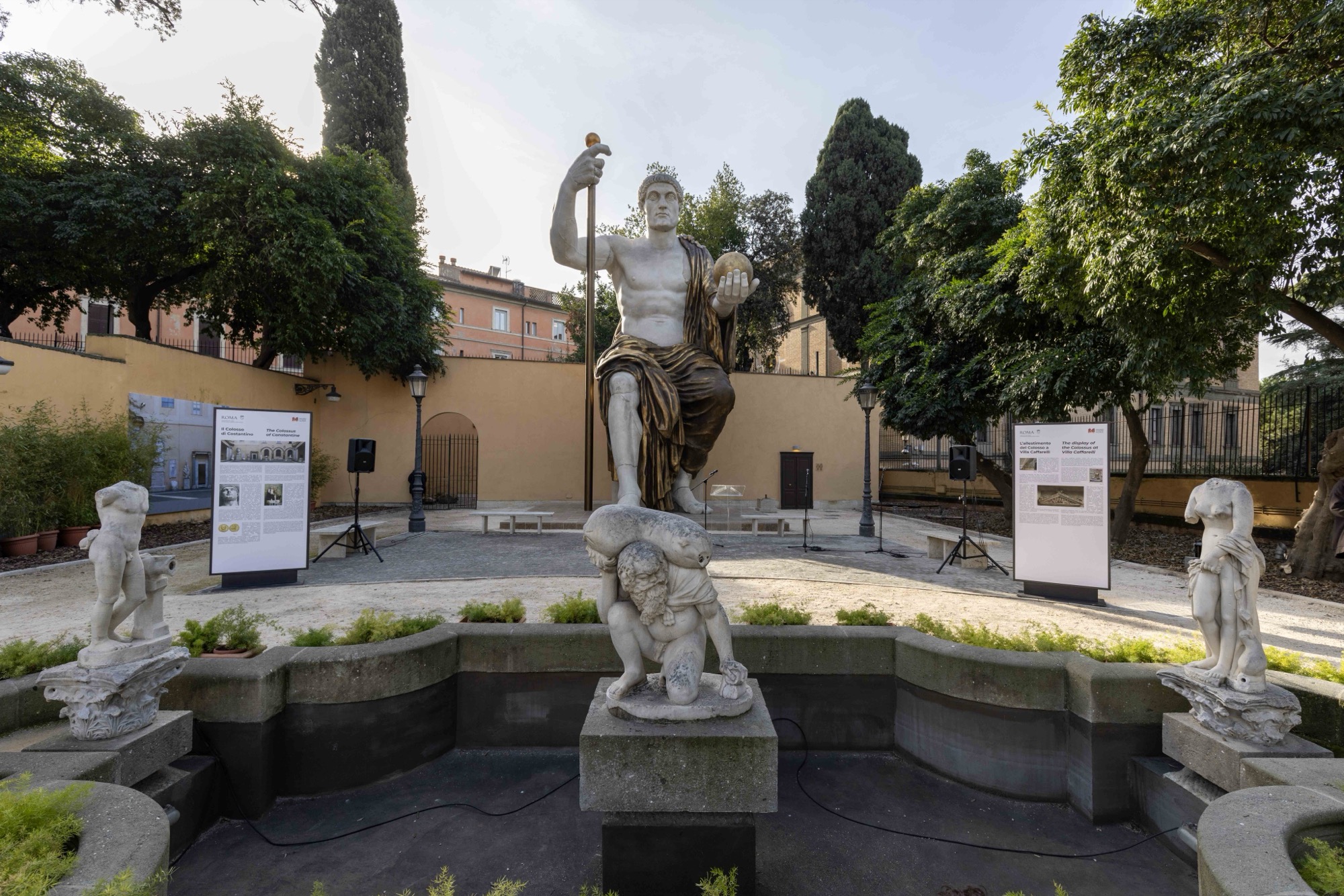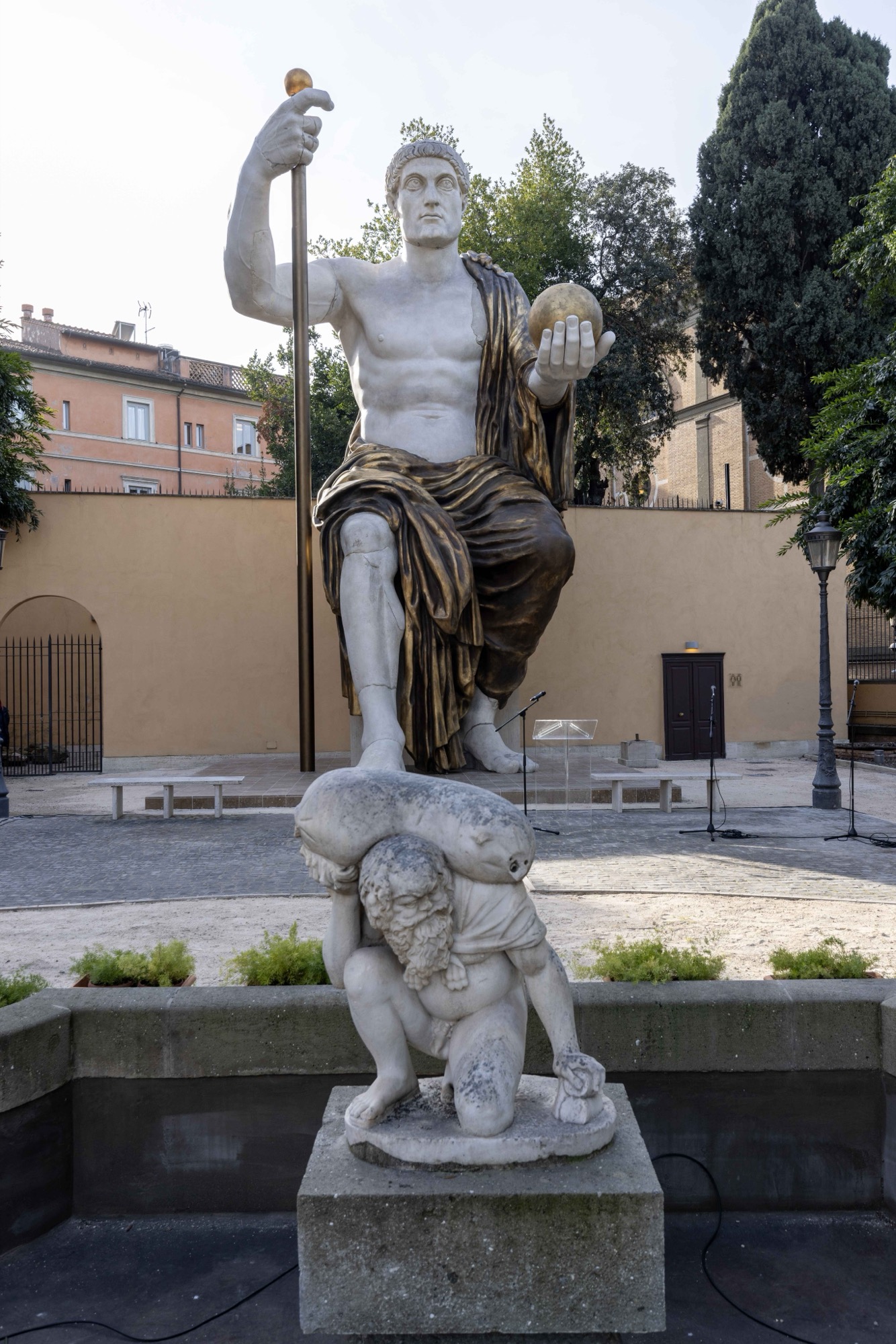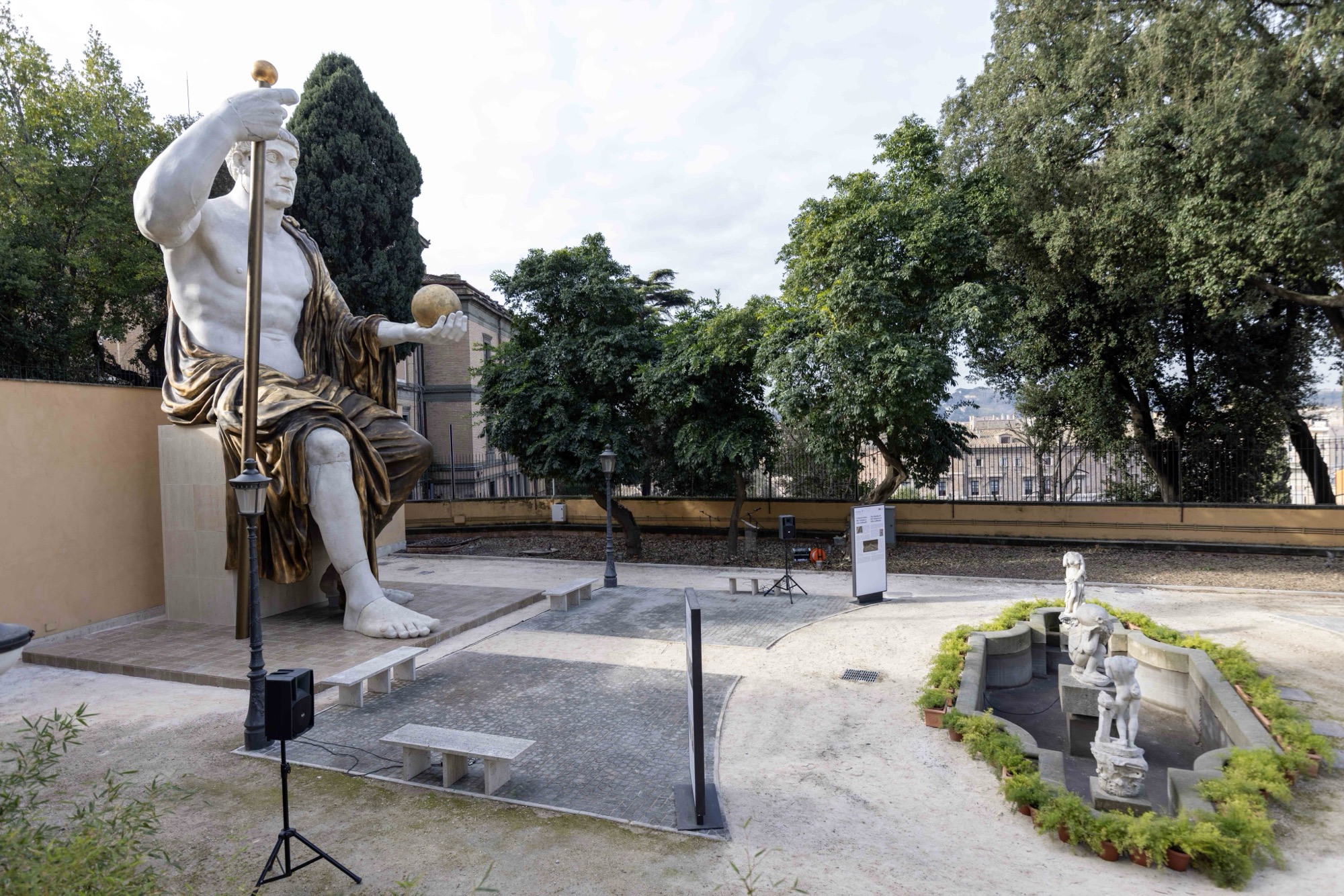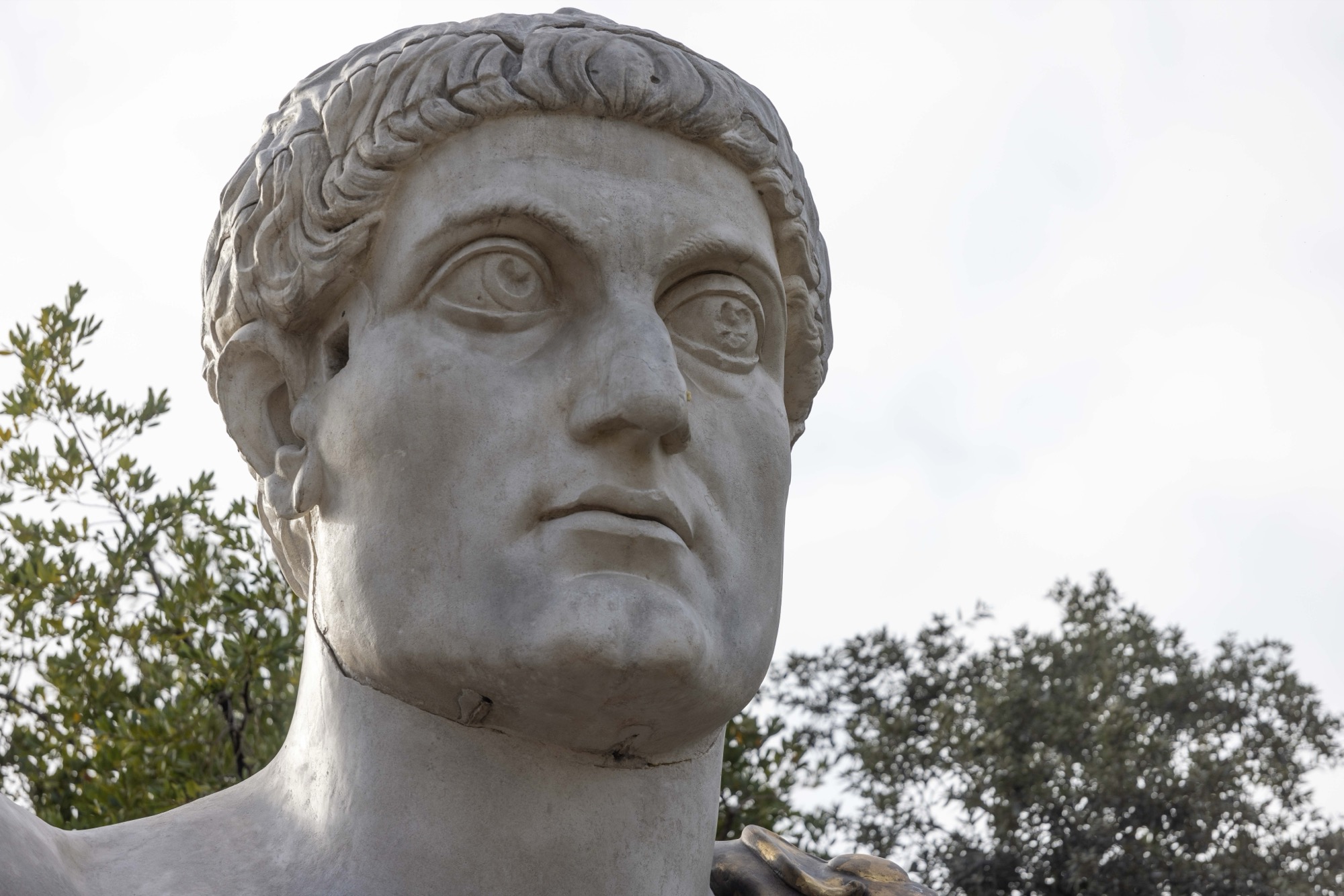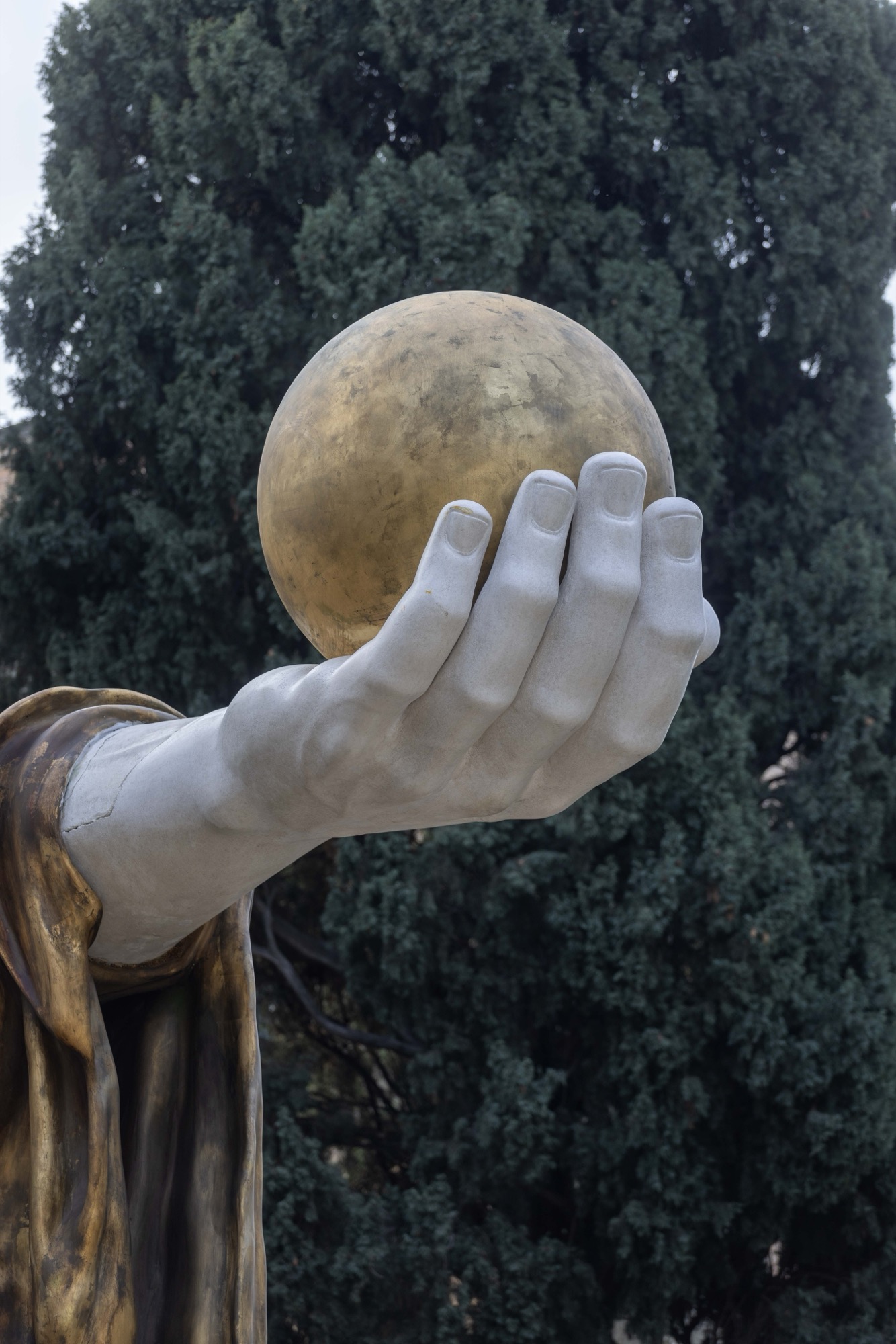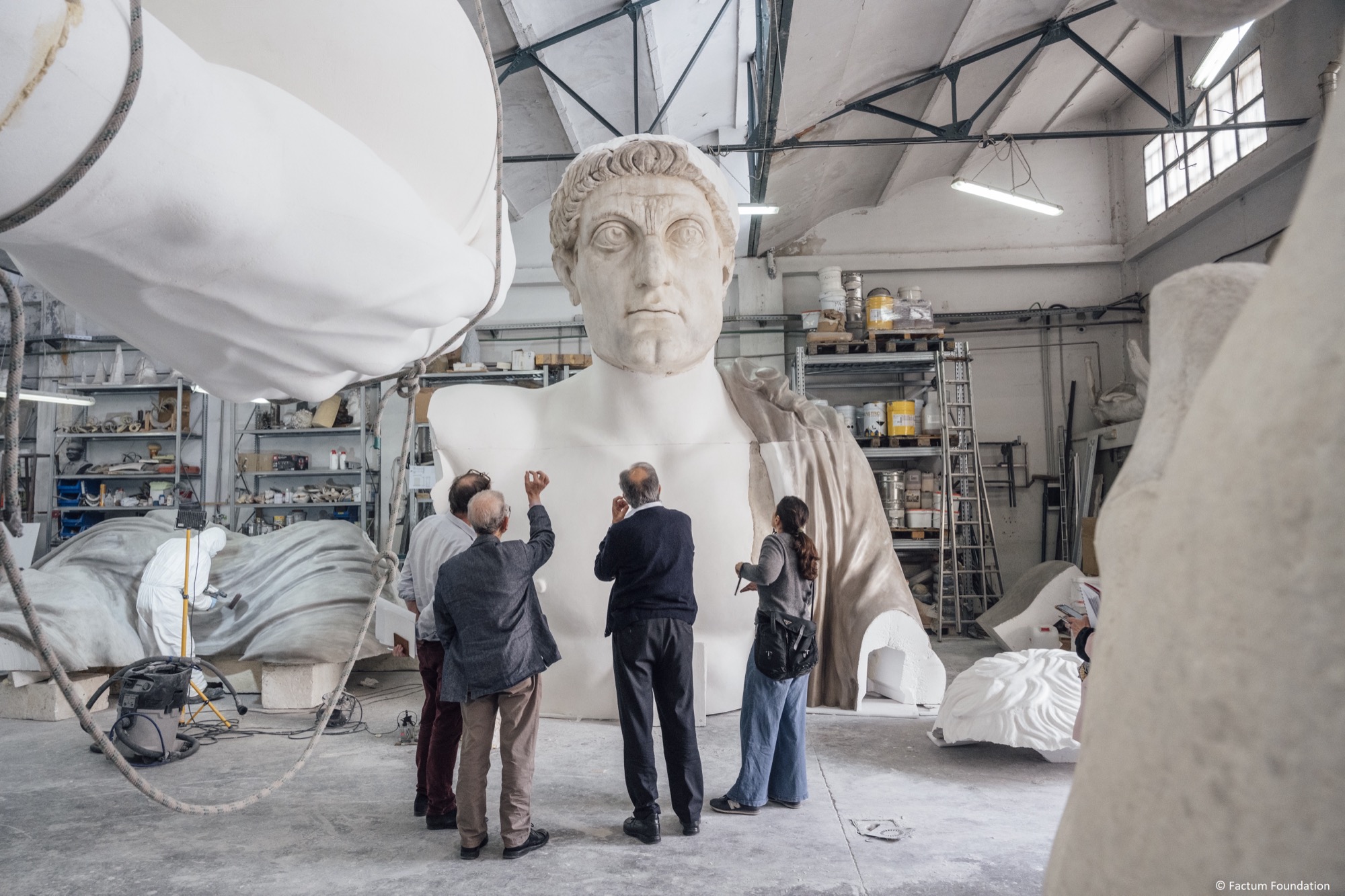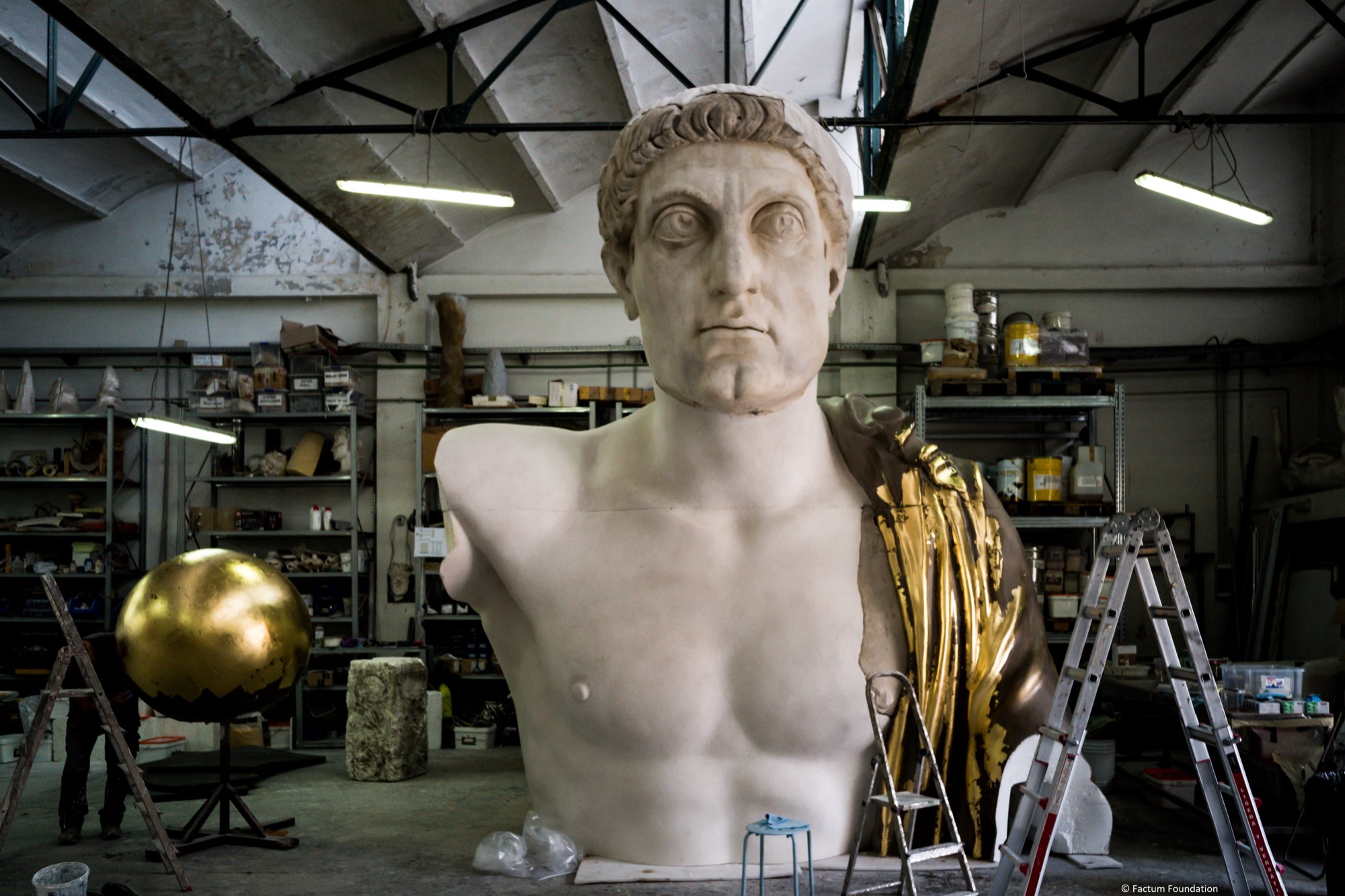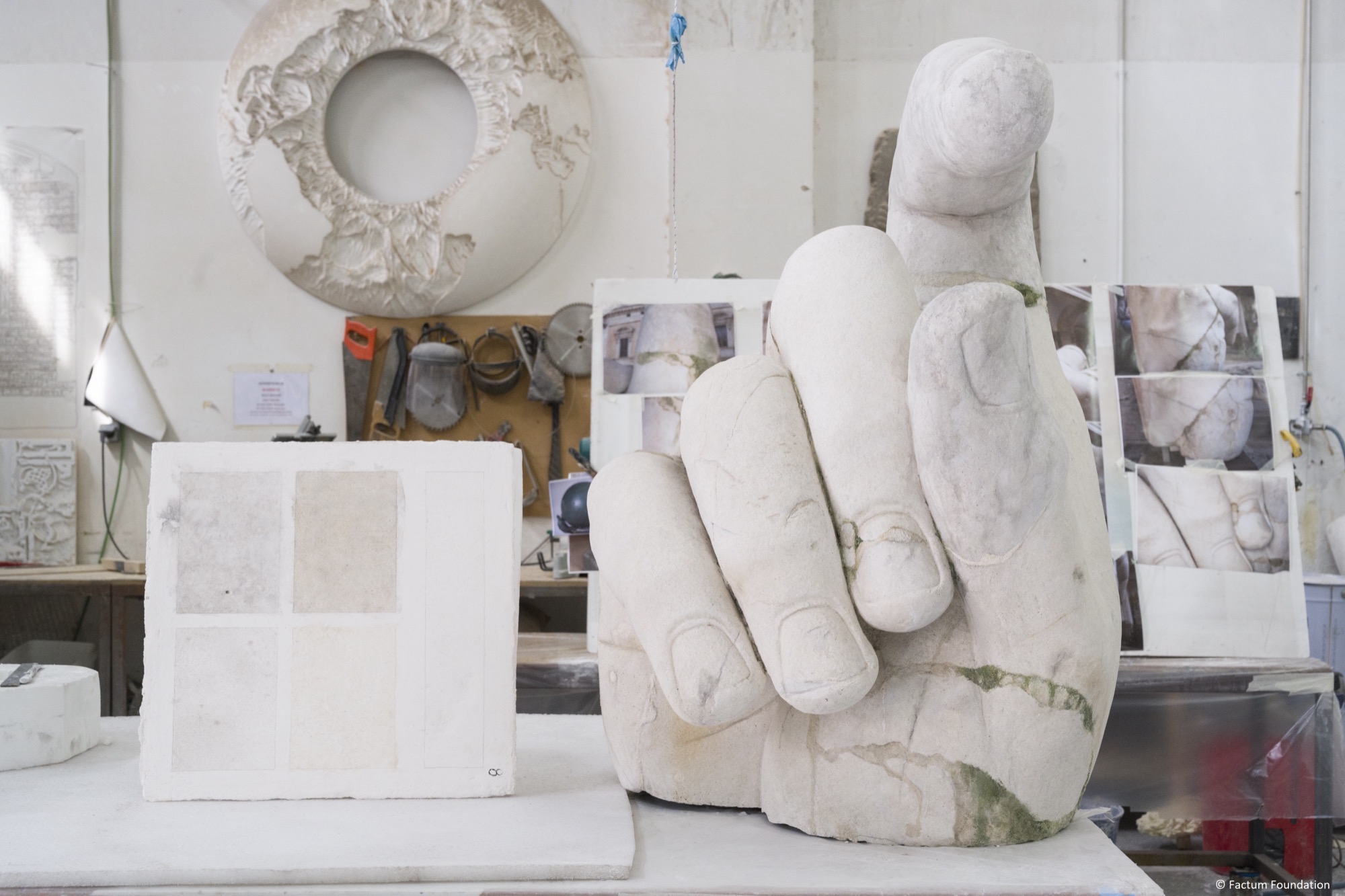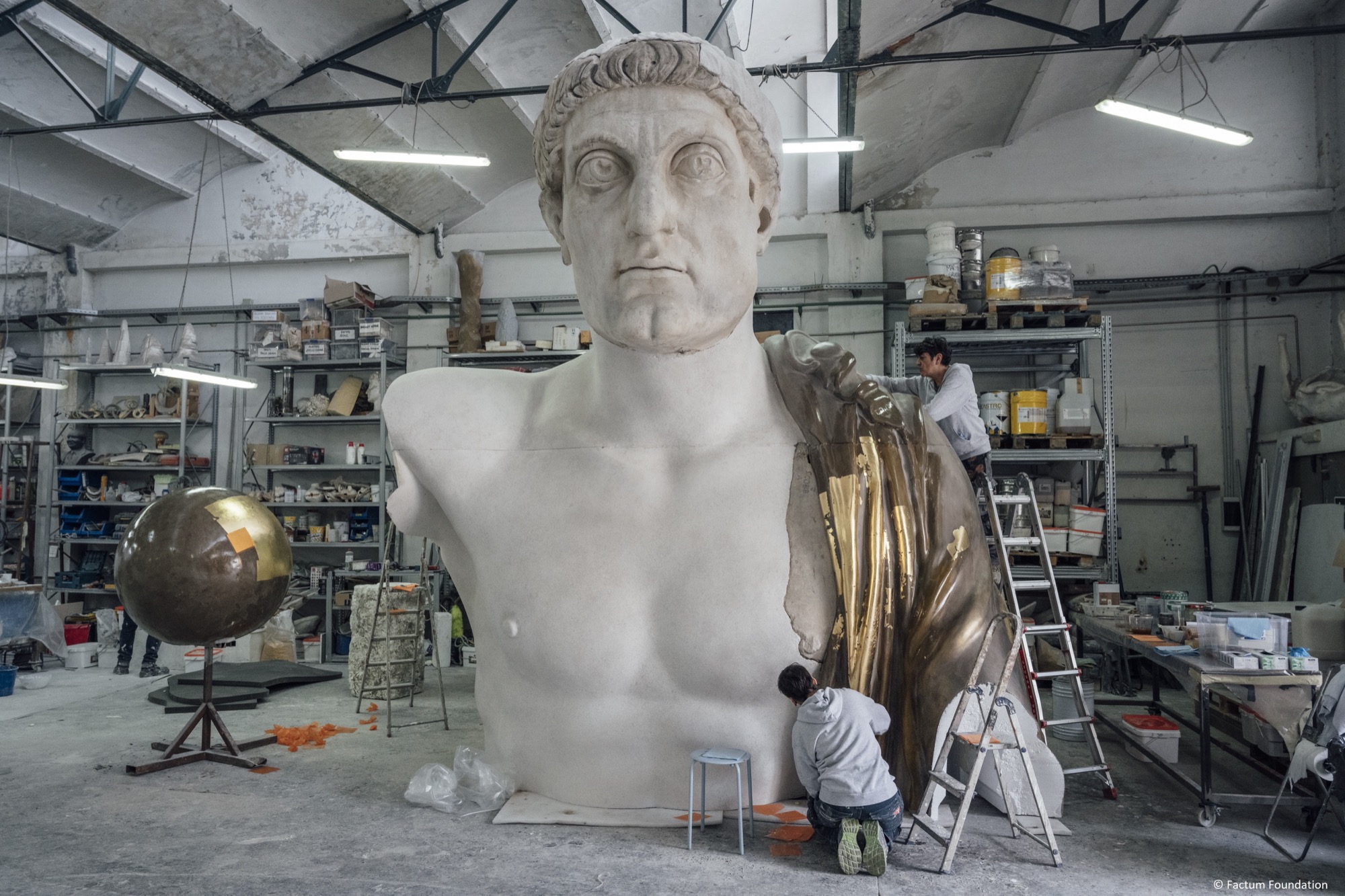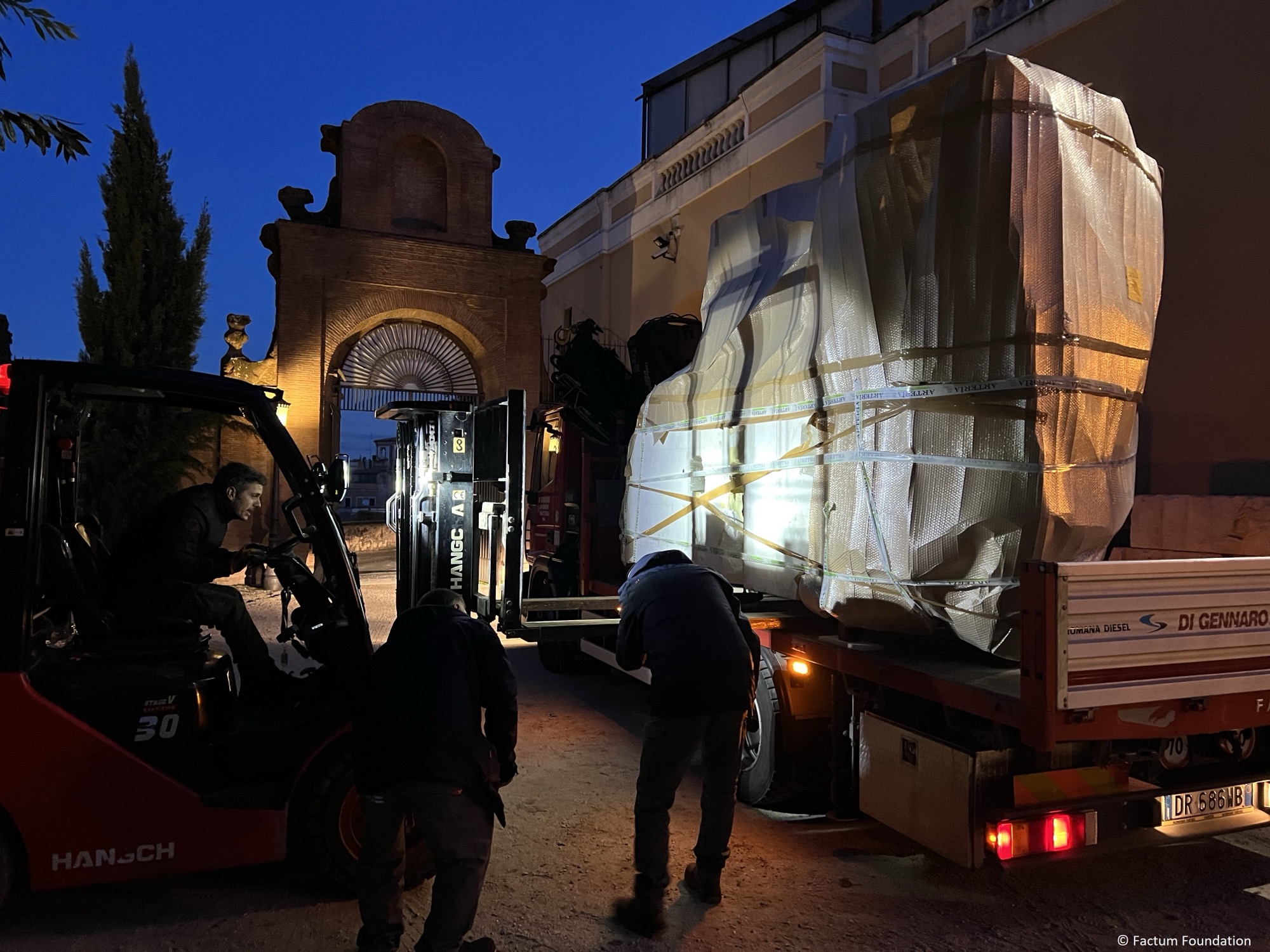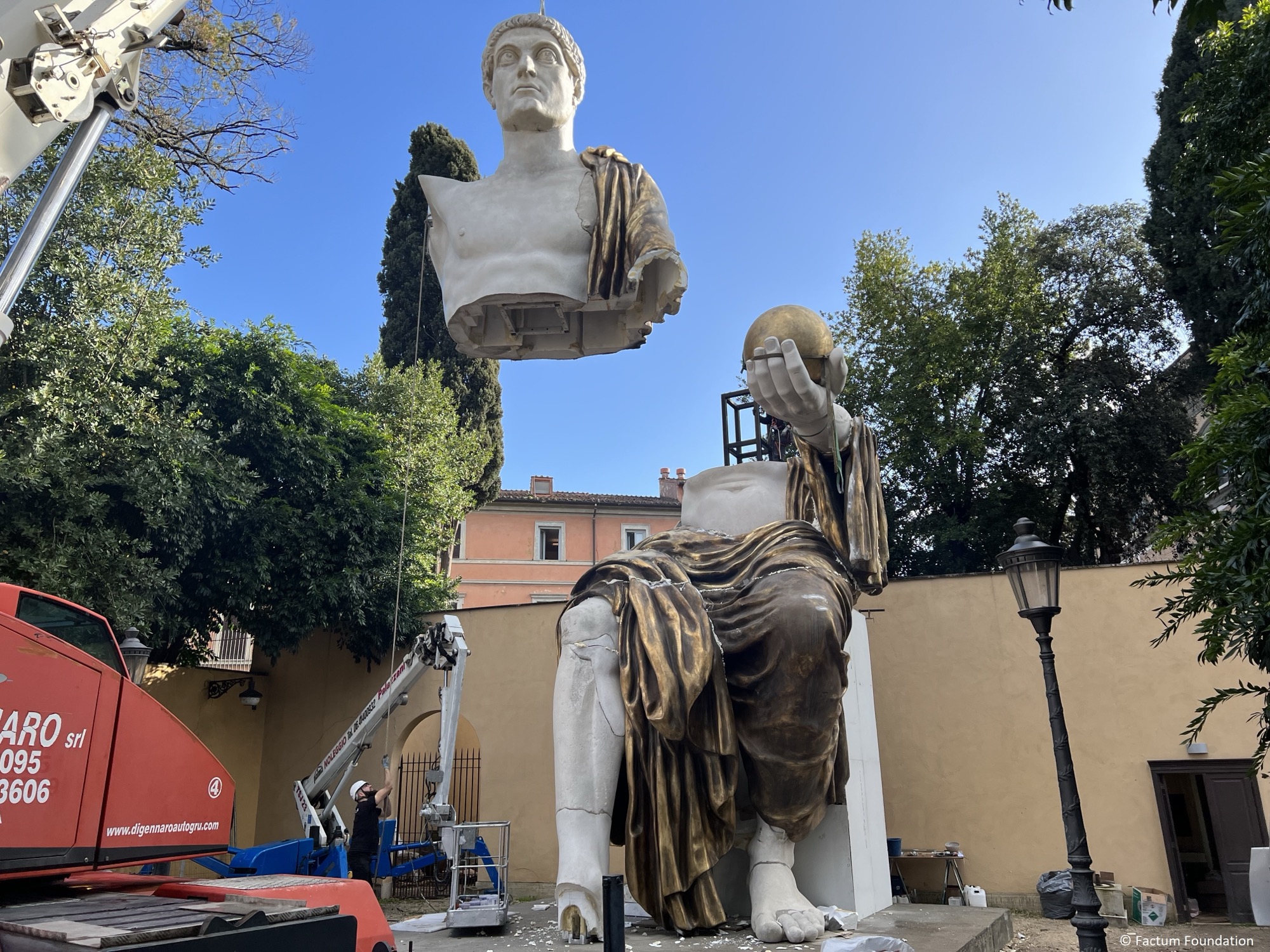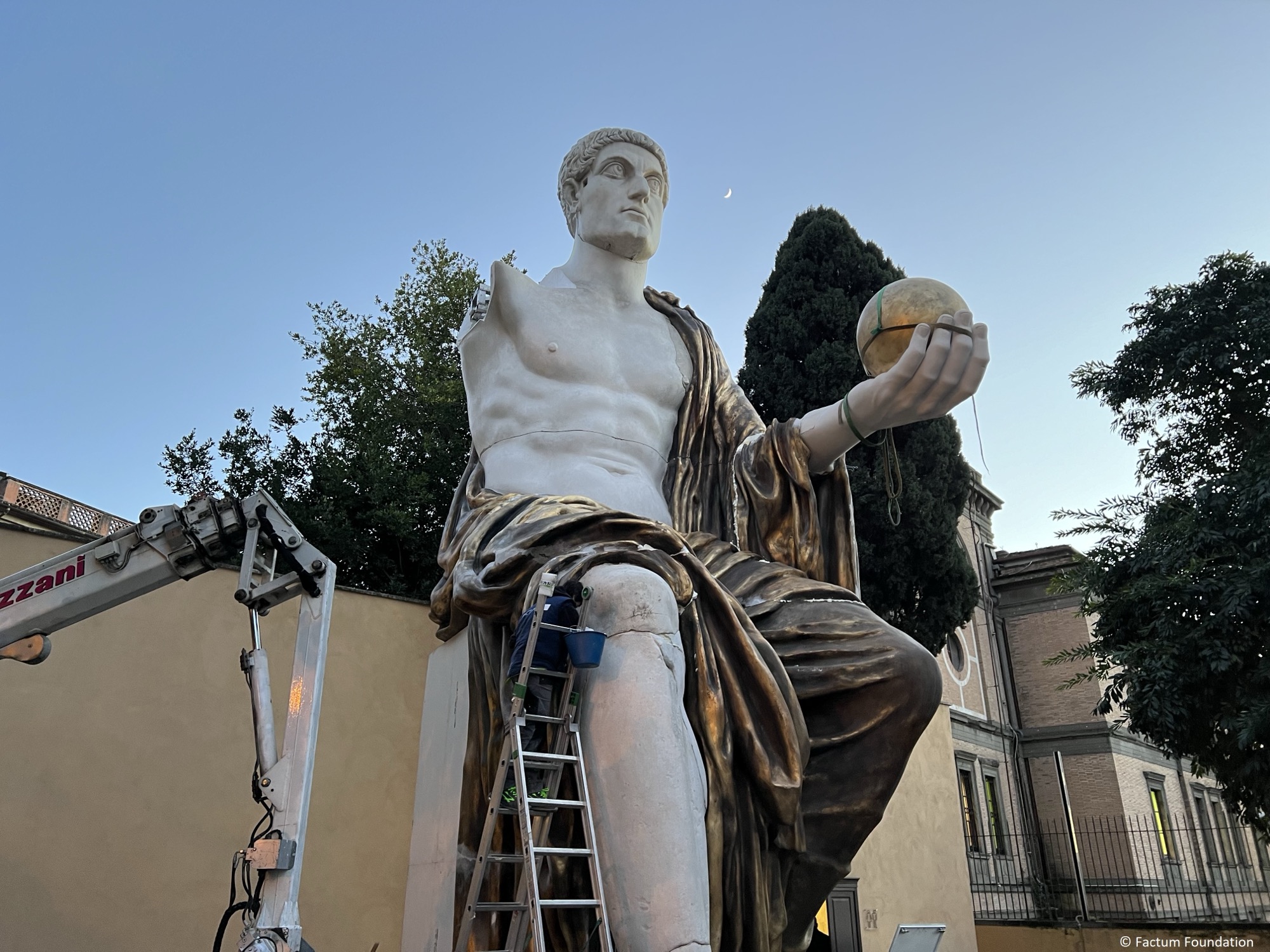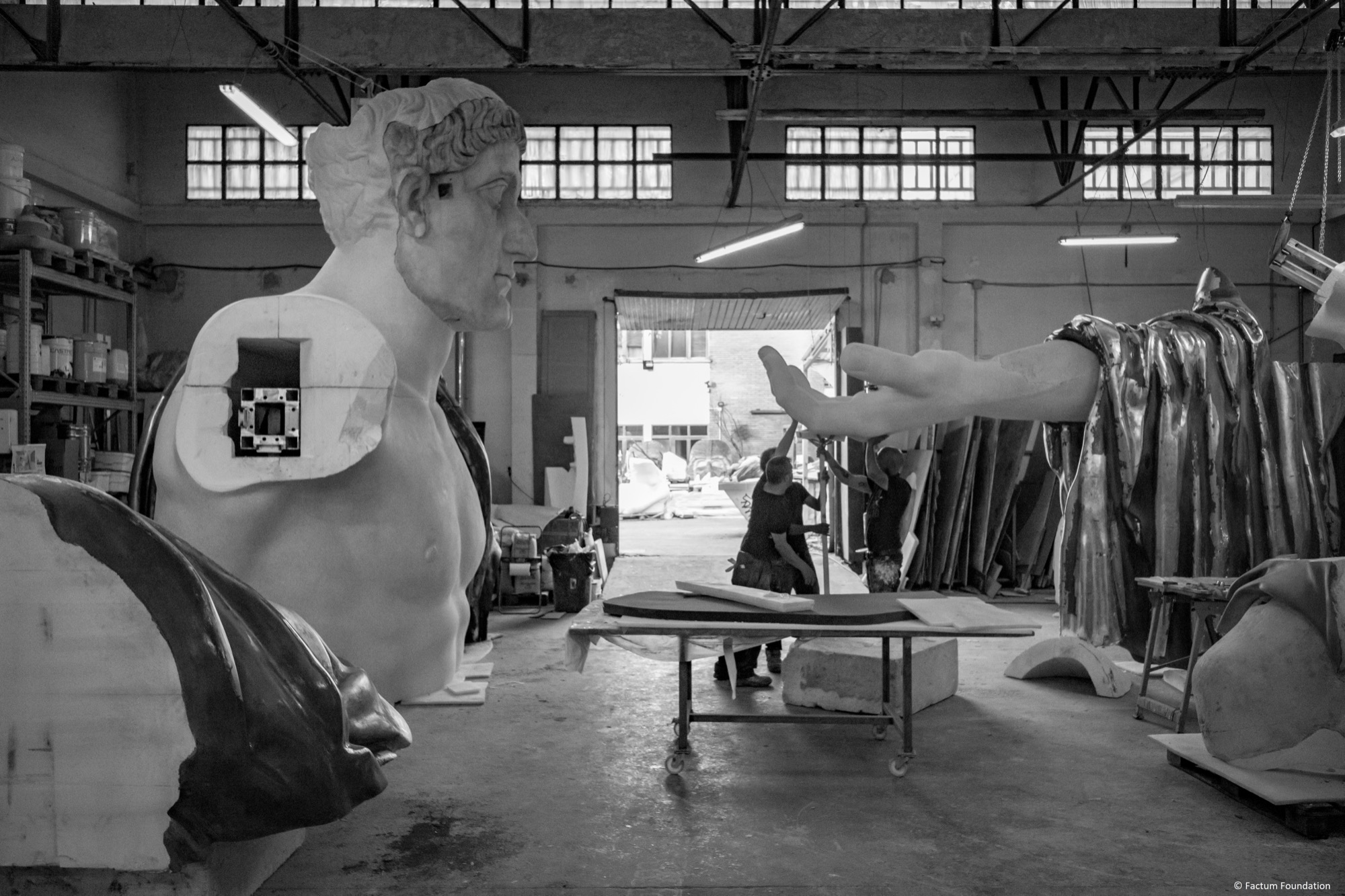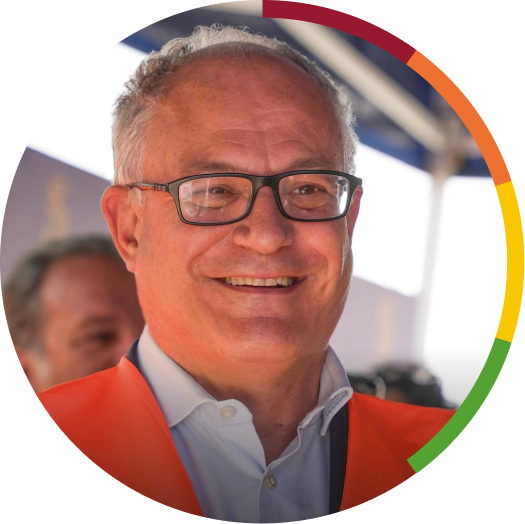Reproduction of the Colossus of Constantine
Implementing party
Project description
The project consisted of the creation of a replica of the Colossus of Constantine.
The statue, on a scale of 1:1 m, is about 13 metres high and has been made using innovative reconstruction techniques starting from the original pieces dating from the 4th century AD, preserved in the Capitoline Museums.
The replica of the Colossus of Constantine has been placed in the Villa Caffarelli Garden, where it can be visited and admired free of charge by citizens and tourists. The garden also extends over the area occupied in ancient times by the Temple of Jupiter Optimus Maximus, which once housed the statue of Jupiter, perhaps the one from which the Colossus - or in any case, its model - was derived.
Among the most important works of antiquity, the Colossus of Constantine is one of the most significant examples of late Roman sculpture. Rediscovered in the 15th century in the Basilica of Maxentius, today only a few monumental marble fragments of the statue are preserved in the courtyard of the Palazzo dei Conservatori of the Capitoline Museums: head, right arm, wrist, right hand, right knee, right shin, right foot and left foot.
The project for the reconstruction of the Colossus of Constantine began with an important archaeological, historical and functional analysis of the fragments, supported by the reading of literary and epigraphic sources.
The nine fragments of Parian marble, currently preserved in the Capitoline Museums, were found in 1486 in the apse of a building that was considered to be the Temple of Peace of Vespasian, and that only at the beginning of the 1800s was correctly identified as the Basilica of Maxentius on the Via Sacra. They were thought to belong to a statue of the emperor Commodus, and it was not until the late 1800s that the fragments were identified as a colossal portrait of the emperor Constantine. A tenth fragment, part of the chest, found in 1951, is about to be transferred from the Archaeological Park of the Colosseum to the courtyard of the Palazzo dei Conservatori, together with the other fragments. The archaeological study of the fragments has led to the hypothesis that the Colossus was seated and that it was made as an acrolith, that is, with the bare parts in white marble and the drapery in metal or gilt stucco. According to a typical iconographic scheme of the time, which assimilated the emperor to the deity, Constantine is represented as Jupiter, with his upper body uncovered and his cloak resting on his shoulder; his right arm holds the long sceptre and his left hand the globe.
At the end of March 2022, a team from the Factum Foundation spent three days in the courtyard of the Capitoline Museums to scan the fragments using the photogrammetry technique. Each fragment was modelled in 3D and placed on the digital body of the statue, which was created using as iconographic examples other imperial cult statues in similar poses, including the colossal Statue of Jupiter (1st century AD) preserved in the State Hermitage Museum in Saint Petersburg, probably inspired by the Statue of Zeus at Olympia by Phidias, and the large plaster copy of the statue of the emperor Claudius, portrayed as Jupiter, in the Ara Pacis Museum.
The complex reconstruction operation carried out by Factum took several factors into account. After completing the very high-resolution 3D model, the material reconstruction of the Colossus began.
Resin and polyurethane, together with marble powder, gold leaf and plaster, were chosen as the materials for marble and bronze surfaces, while an easily assembled and removable aluminium support was used for the internal structure (which may have originally been made of bricks, wood and metal bars). The final result makes it possible to admire the Colossus as a whole in a magnificent illusion, in which the "seams" between the rematerialised parts and the copies of the original fragments present in the courtyard of the Palazzo dei Conservatori are clearly visible.
Status
Planning
Tender stage
Site
End of Work
Funding source
Patronage
